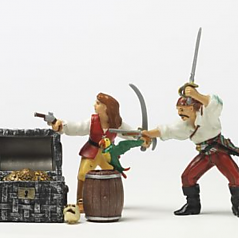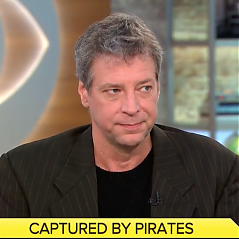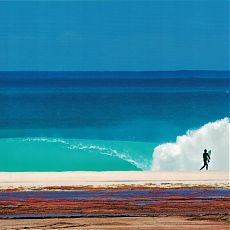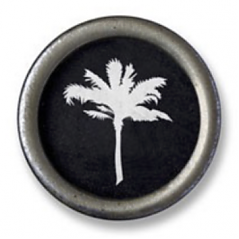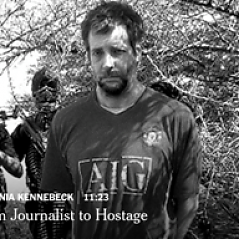Blog Archive

Episode 22: Ben Weissenbach
Ben Weissenbach recently spent time adventuring through cold & isolated parts of Alaska, and his book NORTH TO THE FUTURE takes a look at migrating forests, melting glaciers, and thawing permafrost to examine the effects of climate change in a corner of the world where the climate has changed the most: temperatures in Alaska have risen more than twice as fast as the global average since about 1970.
Read More Get UpdatesEpisode 22: Ben Weissenbach
Ben Weissenbach recently spent time adventuring through cold & isolated parts of Alaska, and his book NORTH TO THE FUTURE takes a look at migrating forests, melting glaciers, and thawing permafrost to examine the effects of climate change in a corner of the world where the climate has changed the most: temperatures in Alaska have risen more than twice as fast as the global average since about 1970.
posted 22 November 2025 by Michael Scott Moore
Episode 21: Francisco Cantú
On episode 21 of Radio Free Mike, Francisco Cantú talks about working for — and leaving — the Border Patrol, as well as mission creep north of the wire.
posted 5 November 2025 by Michael Scott Moore
Episode 20: Brian Klaas
On Episode 20 of Radio Free Mike, the author of CORRUPTIBLE, Brian Klaas, talks about political corruption, how it festers, and how it dries up.
posted 21 October 2025 by Michael Scott Moore
Episode 019: Tom Zoellner
I had a great time talking to Tom Zoellner about his new book THE ROAD WAS FULL OF THORNS, and the odd-sounding legal theory that forced Lincoln’s hand during the Civil War. Episode 20 of Radio Free Mike.
posted 21 October 2025 by Michael Scott Moore
Episode 018: Sonia Kennebeck
Sonia Kennebeck on her film REALITY WINNER, and the unfashionable topic of interference in the 2016 election. On Episode 18 of Radio Free Mike.
posted 18 September 2025 by Michael Scott Moore
Episode 017: Roger Carstens
For Episode 17 of Radio Free Mike I talked to Roger Carstens about the still-mysterious case of Austin Tice, the journalist kidnapped in Syria thirteen years ago. When the prisons opened in December, he paid a visit on behalf of the US government.
posted 2 September 2025 by Michael Scott Moore

Episode 016: Saumya Roy
Saumya Roy’s fascinating book on the waste-pickers of Mumbai, Castaway Mountain, is the topic of Episode 16 of Radio Free Mike. She tells me about the economy of trash that has grown up around the mountainous landfill of Deonar.
Read More
Episode 015: Mark Sarvas
I talked to Mark Sarvas about his excellent, weird, short novel @UGMan for Episode 15 of Radio Free Mike. It makes free allusions to Notes from Underground and evokes pre-Musk Twitter. Complete with an exploded bird on the cover . . .
Read More
Episode 14: Laurence Norman
For Episode 14 of Radio Free Mike I talked to Laurence Norman about what was hit, and what wasn’t, in Iran in June. Laurence has covered the Iranian nuclear program for thirteen years at the Wall Street Journal & knows his stuff.
Read More
Episode 013: Khue Pham
Wonderful to chat with Khuê Pham about her novel BROTHERS AND GHOSTS, a compact family saga translated from German into English — but not, so far, into Vietnamese. Find out why on Episode 13 of Radio Free Mike.
Read More
Episode 12: Jessa Crispin
Terrific discussion with Jessa Crispin about the migrating uteruses of ancient Greece as well as the Michael-Douglas barometer of American manhood. Her new book is called WHAT IS WRONG WITH MEN?
Read More
Episode 11 with Thad Ziolkowski
I talked to Thad Ziolkowski, poet and author of THE DROP, about his excellent book as well as my newish feature in Surfers Journal about surfing, suicide, addiction, recovery, and Somalia. Episode 011 of Radio Free Mike.
Read More
Episode 10 with Meghan Daum
For Episode 10 of Radio Free Mike, I talked to essayist and author Meghan Daum about the loss of her home in the Eaton Fire, “problematization,” and her new book, THE CATASTROPHE HOUR.
Read More

Episode 8 with Antoine Wilson
I had a great time talking to Antoine Wilson about his novel MOUTH TO MOUTH, on Episode 8, but for the first ten minutes we also talk about the LA fires, which forced him & his family to evacuate. History and culture on Radio Free Mike.
Read More
Episode 7 with Jeanne Carstensen
Jeanne Carstensen witnessed the worst recorded refugee shipwreck in eastern Aegean history in 2015, from the island of Lesbos. Her new book A GREEK TRAGEDY is well-written and meticulously reported account. Mediterranean migration is one of my topics, and we talk all about it on Episode 7 of Radio Free Mike.
Read More
Episode 6 with Peter Theroux
Peter Theroux has started to publish a two-volume memoir about his career in US intelligence. He’s an excellent writer, from a family of them — his brothers are Paul and Alexander — and In Obscura describes his government work in the Middle East and suburban Washington with a sharp sense of detail and a lively sense of humor. Peter also describes Syria with so much obvious affection that I thought it might be interesting to hear from him about the old Ba’athist regime that fell in December, as well as the unreadable Islamist who’s now in charge. On Episode 6 of Radio Free Mike.
Read More
Episode 5 with Soraya Simi
Soraya Simi was hand-picked by Angela Madsen to direct a film about her last major ocean-rowing voyage, a solo attempt to row from L.A. to Honolulu in 2020. Angela was a professional ocean rower and paraplegic, an Olympic gold medalist, a Guinness world-record holder in several categories, and a former U.S. Marine. Soraya’s new film about the ill-fated voyage is named after Angela’s fiberglass boat, THE ROW OF LIFE, and the story behind the film is almost as tense and tough as its subject. On Episode 5 of Radio Free Mike.
Read More
Episode 4 with Jacob Kushner
On Episode 004 of Radio Free Mike, Nazis On Bikes, I talk to Jacob Kushner about his book LOOK AWAY, which deals with a German far-right gang and how the police finally (didn’t) end its reign of terror. We also discuss the German elections coming up this weekend, and, yes, Elon Musk’s Nazi salute.
Read More









